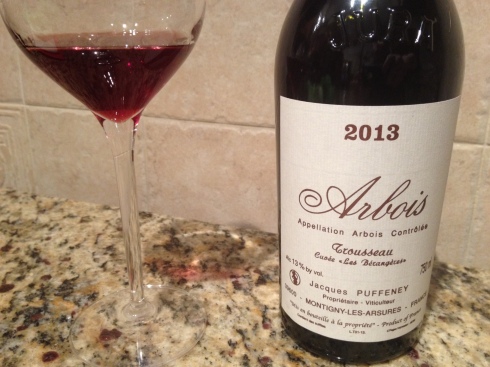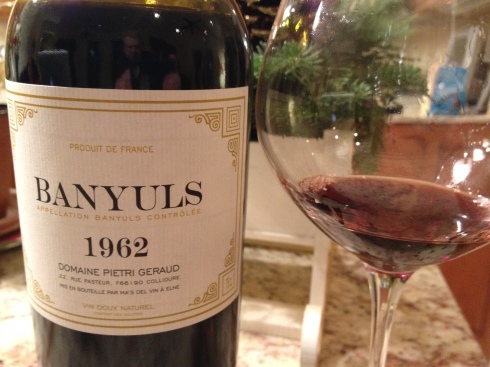Château Deyrem Valentin 2010, Margaux, France. 14.5%ABV, Priced from $30-40 online.
Color is ruby with medium opacity. On the nose, the wine shows blackberry jam, plum, toasted oak and a hint of green vegetation. The palate is given a deluge of delightful bold flavors with blackberry, blueberry, rose petals, plum, and eucalyptus leaves. Powerful acidity on the back palate; medium body overall. Additional notes of oak, limestone, and gravel. Exhibits a medium long finish of fruit notes followed by lengthy tannins.
I am an avid lover of Margaux, which also gives me high levels of expectation. This is my first bottle of Deyrem Valenti Margaux. I have waited almost two years since buying this 2010 to be able to sample it now that it has finally reached an age that classic wine lovers call “far too young” and others call the midlife span. Now that I have opened one bottle, more are sure to come when pairing opportunities arise.
This wine does show the eucalyptus and hint of mustiness I have come to love and expect from the region. I preferred this wine after a full day of exposure to air when the fruits were muted slightly and the body expanded, making a bolder overall impression.
It drank nicely still even on day 3 of being opened, without refrigeration. Ideal to pair with classic French cuisine, it has enough power to remind me of the things I love about Margaux without the punch or the price tag of a Cru wine. For the price, this is a nice mid-level wine from a small chateau from the region, a solid B+. For the die-hard French wine lover, this is a wine you can enjoy knowing that even a fifth-classificition chateau from this vintage will cost more than twice as much.








Why Wines Deserve a Second Chance: #MWWC22
19 JanYesterday was a day I planned for months and worried about for weeks in advance. It was a wine tasting of a group of wines outside my normal scope of expertise. Traditionally when I host a tasting, I do ONE thing specifically: I serve wines I know personally, whose vines and trellises I have paced aside, whose barrels I have touched, whose flavors and colors I know intimately.
This was not one of those times.
Sure, on my ten wine list I hand-picked a few bottles that had been waiting in the cellar for just such a day. But by in large, I researched and shopped regions I didn’t know as well, and looked more closely at wines that often get a bad rap. For examples, the wines we scoot past quickly in a restaurant list when we see them. Such as: Italian white wines, and chianti.
“Why?” you cry out, outraged and distressed, “What have Chianti and Italian white wines done to you?”
Nothing.
That’s exactly it, they did nothing for me, and nothing TO me.
And it’s my own fault.
Because we first taste these wines in a family-style Italian restaurant where cheap wines are served by the gallon. We learn, early in age, to be dismissive of cheap pinot grigio and cheap chianti. As a result, later on in our lives, we don’t even bother look for quality versions of these same things. It’s as silly as hating cars as an adult, just because your first teenage car was a cheap junker that smoked from the exhaust, had bald tires, and barely got you where you needed to go. It’s not the fault of the vehicle, to be honest.
It’s time to give these wines a second chance.
For white wines, I turned to Friuli-Venizia Guilia.
I served these four white wines, in order:
–Venica 2013 Malvasia from Collio,
–Borgio Del Tiglio 2011 white blend from Collio,
–I Clivi 2014 Verduzzo from Collio Orientali del Friuli DOC, and
–I Clivi 2001 Galea from Collio Orientali del Friuli DOC.
These four wines changed all our preconceived notions of Italian white wines. Crafted with obvious expertise, love and care, these wines displayed depth, complexity, minerality, and body. They told stories. They enticed our palates, and they left us wanting more.
The 2001 Galea showed its age, grace, and deep color beautifully, on par with some of my revered and aged Bordeaux or Burgundian wines. The color alone was stunning; photos just don’t do it justice.
I found it funny: one of my guests (almost as a rule) dismisses white wines. He was not as quiet as I expected during these first four bottles, and eventually, I learned he was impressed and enjoying himself! And he made a point to speak up and admit both of these points to the group.
And we moved on to the red wines, and we laughed, and we loosened up. And at the 9th bottle, I poured a chianti.
But not just any chianti.
Thought a relatively young wine, I served a Chianti Classico Gran Reserva Selezione, a DOCG wine with the tell-tale black rooster on the bottle. I said little about the wine, and I said nothing about the Rooster.
My guests said it all for me. They told me this wine was stunning, eye-opening, not what they expected from a chianti. They shared pairing notes, talked about the color, the nuances they found.
Even after I served the 2000 Brunello Di Montalcino, we ooh’d and ahh’d about it and thoroughly enjoyed it… but eventually we went back to discussing the chianti.
And I thought that maybe it was really us who needed the second chance.
à votre santé!
Submitted to the Monthly Wine Writing Challenge #22
Share this:
Tags: #MWWC, #MWWC22, Italian Red Wine, Italian White Wine, Italian Wine tasting, White wine review, Wine Commentary, Wine Tastings